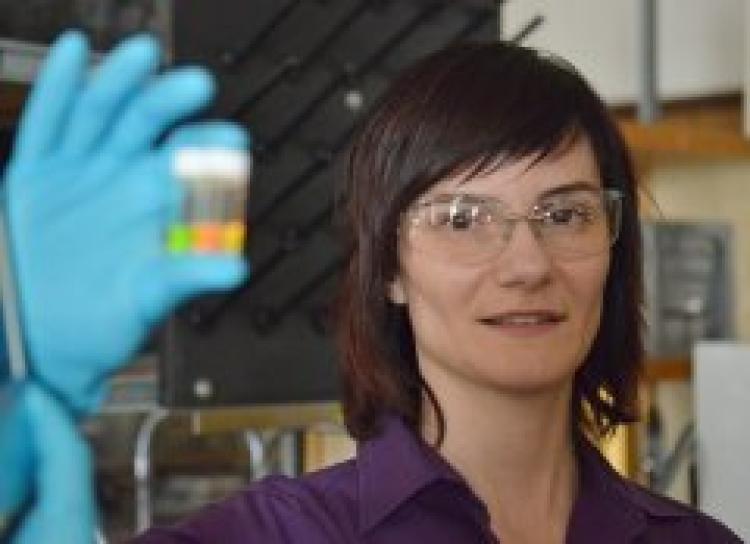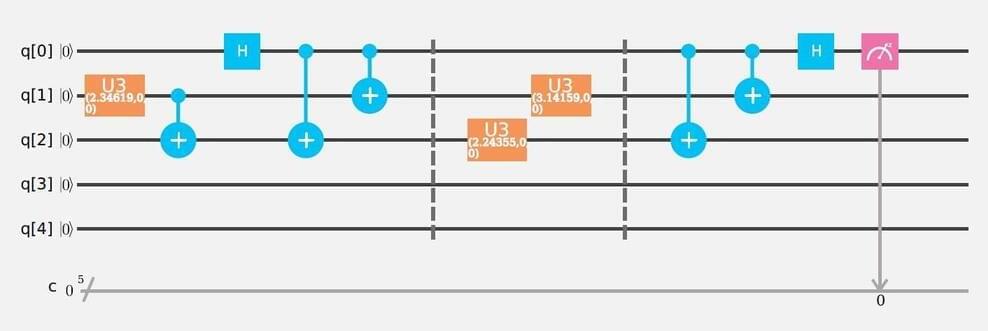The particles inside a proton move around when exposed to electric and magnetic fields, causing it to deform, but this behaviour isn’t well understood.


How does something as immaterial as consciousness arise from something as unconscious as matter?
This is known as the Hard Problem and this theory gets around this problem by explaining consciousness as electrical activity that is aware of its own electrical potential. This is possible because the light photon is the carrier of the electromagnetic force. Because light has momentum and momentum is frame dependent electrical activity in the brain is always in the centre of its own reference frame in ‘the moment of now’ with a potential future that is always uncertain and a past that has gone forever. It is because consciousness is always in the centre of its own reference frame that we have the concept of ‘mind’ with each one of us having our own personal view of the Universe. This is within a process formed by the spontaneous absorption and emission of light a process of continuous energy exchange forming the ever changing world of our everyday life. If our eyes where more sensitive to light we would be able to see that everything is radiating EMR or light continuously because the Universe is never at absolute zero.
In this theory consciousness is the most advanced part of a universal process that can be explained by physics. There are no paradoxes in this theory! We are in the centre of our own reference frame being able to look back in time in every direction at the beauty of the stars. We can also look down into individual reference frames seeing the future unfold photon by photon relative to that frame of reference.
The greatest affect this process of continuous energy exchange has on us is the aging process with photon energy from the Sun cascading down forming greater degrees of freedom for the continuous increase in entropy or disorganization.
But above all this is a creative process with the future coming into existence relative to the energy and momentum or actions of each individual life form. The wave-particle duality of light is acting like the bits or zeros and ones of a computer. This forms a blank canvas for life to form its own future relative to its position and the energy and momentum of its own actions. The Universe is a continuum with spacetime as an emergent property with an Arrow of Time for each object or life form with a future coming into existence relative to their energy & momentum with each new photon electron coupling or dipole moment.
I believe this is what we are seeing when we see an artist at work we are seeing the future unfolding relative to the energy and momentum of the artist!
In this theory creation is truly in the eye and hand of the beholder!
Thanks for watching please share and subscribe on YouTube and be part of the promotion of this theory!
Find me on Facebook https://www.facebook.com/nick.harvey.1806
Link to my web site: http://quantumartandpoetry.blogspot.co.uk/
Link to: A new interpretation of Quantum Mechanics on Facebook.
https://www.facebook.com/groups/280524372113402/
Quantum Atom Theory on facebook with diagrams and scientific experimental videos:
https://www.facebook.com/QuantumAtomTheory/
The Schrodinger’s Cat Thought Experiment Explained by QAT


Just in time for Halloween, scientists have discovered something spooky and strange occurring at the edge of the solar system: The heliopause — the boundary between the heliosphere (the bubble of solar wind encompassing the solar system) and the interstellar medium (the material between the stars) appears to be rippling and creating oblique angles in an unexpected manner.
The general concept that the heliopause changes shape is not new; over the past decade, researchers have determined that it is not static. They made this discovery using data from Voyager 1 and Voyager 2, the only two spacecraft to exit the heliosphere thus far, as well as NASA’s Interstellar Boundary Explorer (IBEX) satellite, which studies the emissions of energetic neutral atoms (ENAs) that are created when solar winds and the interstellar medium interact.

A group of scientists led by the U.S. Department of Energy’s National Renewable Energy Laboratory (NREL) in Golden and involving the University of Colorado Boulder has developed a new, eco-friendly method to produce ammonia, the main ingredient of fertilizer, using light.
The researchers discovered that light energy can be used to change dinitrogen (N2), a molecule made of two nitrogen atoms, to ammonia (NH3), a compound of nitrogen and hydrogen. The researchers hope the newly discovered, light-driven chemical process that creates ammonia can lead to future developments that will enhance global agricultural practices while decreasing the dependence of farmers on fossil fuels.
Traditionally there have been two main ways to transform nitrogen, the most common gas in Earth’s atmosphere, for use by living organisms. One is a biological process that occurs when atmospheric nitrogen is “fixed” by bacteria found in the roots of some plants like legumes and then converted to ammonia by an enzyme called nitrogenase.

For the first time, a group of researchers from Universidad Complutense de Madrid, IBM, ETH Zurich, MIT and Harvard University have observed topological phases of matter of quantum states under the action of temperature or certain types of experimental imperfections. The experiment was conducted using quantum simulator at IBM.
Quantum simulators were first conjectured by the Nobel Prize laureate Richard Feynman in 1982. Ordinary classical computers are inefficient at simulating systems of interacting quantum particles These new simulators are genuinely quantum and can be controlled very precisely. They replicate other quantum systems that are harder to manipulate and whose physical properties remain very much unknown.
In an article published in the journal Quantum Information, the researchers describe using a quantum simulator with superconducting qubits at IBM to replicate materials known as topological insulators at finite temperature, and measure for the first time their topological quantum phases.
What if we could create metal made of water? Pure water itself is almost perfect as an insulator. Water found naturally in the world is a perfect conduit for electricity due to the impurities and minerals found within it. But water only becomes “metallic” at extremely high pressures. Now researchers have found a way to do so by metallicizing pure water using certain metals.
The process was first experimented with for a paper researchers published in July of 2021. Now, though, a group of researchers have managed to record the transformation of water into metal and shared the video on YouTube. The transformation is only made possible by bringing pure water into contact with electron-sharing alkali metals.
In this instance, the researchers used a combination alloy made of sodium and potassium and then added free-moving charged particles. To accomplish the transformation and create metal from water, the researchers exposed a drop of the alloy to a small amount of water vapor in a vacuum chamber. The water vapor then began to condense on the surface, expanding the droplet altogether.

Improved fabrication methods for qubits made from erbium-doped silicon waveguides give these qubits the key prerequisites for becoming a contender for future quantum computers.
From superconducting circuits to single atoms, there are many quantum-bit—or “qubit”—systems to choose from when building a quantum computer. New to the game are qubits made from individual erbium atoms implanted in silicon waveguides. Each of these qubits can be controlled and measured with telecom-wavelength light, making the platform practical to implement. But the platform has unfavorable properties that have put that implementation on hold. Now Andreas Reiserer of the Max Planck Institute of Quantum Optics in Germany and his colleagues have improved the qubit’s fabrication and detection methods, such that it is viable for near-future use in quantum computing technologies [1]. The results suggest that erbium-doped silicon waveguides could make more promising qubits than previously thought.
One problem with previous erbium-doped silicon waveguides came from the uneven clustering of erbium atoms around impurities in the waveguide. This clustering meant that the erbium atoms had different transition frequencies, making it difficult to simultaneously address multiple atoms and to perform basic operations between them—a necessary component of quantum information processing.

